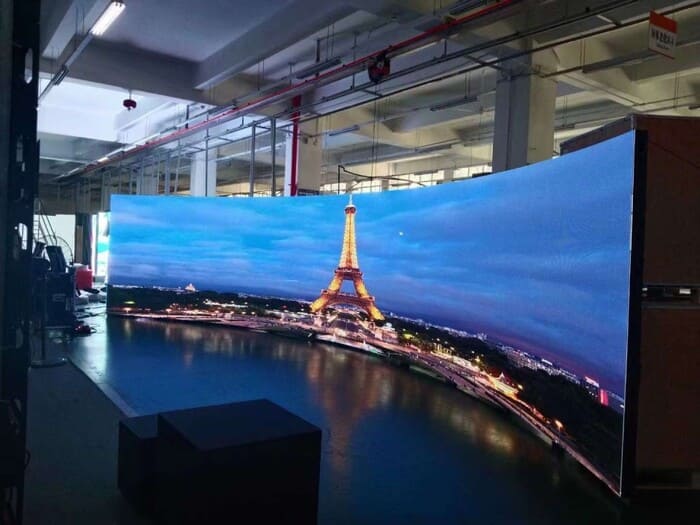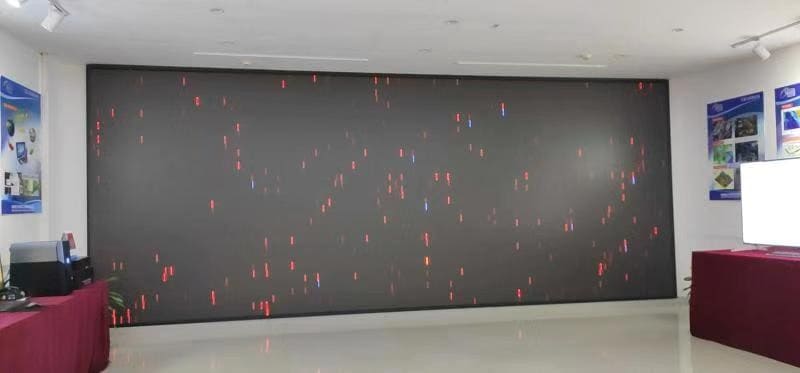LED displays have become an integral part of modern technology, finding applications in everything from TVs and digital billboards to smartphones and wearable devices. These vibrant screens offer impressive visuals but can encounter issues over time like any technology. In this article, we’ll delve into some of the most common problems that users might face with LED displays and provide practical troubleshooting solutions.
| Table Of Contents |
|
LED displays have revolutionized visual experiences, offering stunning clarity and vibrant colors. However, even the best technology can encounter glitches. Understanding and troubleshooting these issues can enhance your overall experience and extend the lifespan of your LED display.

LED displays, short for Light Emitting Diode displays, represent a revolutionary stride in visual technology. Comprising an array of tiny, energy-efficient light-emitting diodes, these displays emit light when an electric current passes through them. Their unique attributes have made them the preferred choice for various applications, from consumer electronics to large-scale outdoor billboards.
At the core of LED displays lie the light-emitting diodes themselves. These microscopic semiconductor devices convert electrical energy directly into light, a process known as electroluminescence. Unlike traditional LCDs that require a separate backlight, each LED display produces light, resulting in enhanced contrast, deeper blacks, and a wider color gamut. This intrinsic property enables LED displays to deliver stunning visuals with remarkable accuracy and vibrancy.
LED displays come in two primary variants: conventional and surface-mounted. Conventional LEDs are individually installed and soldered onto a display board, allowing precise control over each pixel. Surface-mounted LEDs, on the other hand, are directly soldered onto the display’s surface, enabling a more streamlined manufacturing process and better scalability for more extensive collections.
The modular nature of LED displays facilitates seamless assembly and repair. If a single LED malfunctions, it can be replaced without affecting the entire display, minimizing downtime and maintenance costs. Moreover, the energy efficiency of LEDs leads to reduced power consumption compared to traditional displays, contributing to lower operational costs and a reduced environmental footprint.
From indoor signage and TV screens to outdoor billboards and stadium displays, LED technology is reshaping visual experiences across the globe. As this technology continues to evolve, we can anticipate even finer pixel pitches, higher resolutions, and improved energy efficiency, cementing LED displays as the cornerstone of cutting-edge visual communication.
LED displays have become a prevalent form of visual communication across various industries, offering a vibrant and dynamic content presentation. However, like any technology, LED displays can encounter specific issues that hinder their optimal performance.
Problem: Dead pixels are individual points on the LED display that fail to emit light, resulting in small black or colored spots on the screen.
Solution: Manufacturers often have a pixel warranty policy; a replacement or repair may be offered if the display is within warranty. Otherwise, pixel mapping tools can sometimes help identify and correct dead pixels.
Problem: Flickering occurs when the LED display rapidly alternates between on and off states, causing visual discomfort and potential eye strain.
Solution: Adjust the display’s refresh rate and brightness settings to minimize flickering. Ensure that the display drivers are up-to-date and compatible with the hardware.
Problem: Color variations across different sections of the LED display can occur due to manufacturing discrepancies or incorrect color calibration.
Solution: Regularly calibrate the display using hardware calibration tools or software solutions. Ensure uniform lighting conditions and verify that the display’s color settings are correctly configured.
Problem: Prolonged display of static images or content can lead to image persistence, commonly known as burn-in, where ghost images persist even when the content changes.
Solution: Display dynamic content regularly to prevent prolonged static display. Implement screen savers or pixel-shifting features to distribute usage across the screen evenly.
Problem: Due to inconsistent LED performance, certain areas of the LED display may appear brighter or dimmer than others.
Solution: Adjust the display’s brightness and contrast settings for a uniform appearance. If the issue persists, contact the manufacturer for potential repair or replacement.
Problem: Stuck pixels are individual pixels that remain in one color mode and do not change, causing noticeable color discrepancies.
Solution: Use software-based keys that rapidly cycle colors to attempt to unstick the pixel. Massaging or tapping the affected area with a soft cloth can also help.
Problem: Screen artifacts include visual anomalies like lines, distortions, or glitches that can result from signal interference or display driver issues.
Solution: Ensure that display cables are securely connected and not damaged. Update graphics drivers to the latest version and check for any software conflicts causing artifacts.
Problem: LED displays may exhibit color and brightness shifts when viewed from off-angles, diminishing the viewing experience.
Solution: Opt for displays with better viewing angle specifications. Consider investing in displays that utilize advanced panel technologies to mitigate viewing angle issues for critical applications.
Problem: Power fluctuations or connectivity issues can lead to intermittent display failures or sudden shutdowns.
Solution: Use surge protectors to safeguard against power fluctuations. Regularly inspect and secure all cable connections. Ensure that power and connectivity infrastructure meets the display’s requirements.
Problem: Prolonged operation in high-temperature environments can lead to overheating, reducing the LED display’s lifespan.
Solution: Maintain proper ventilation around the display and ensure the ambient temperature remains within the recommended range. If needed, consider installing additional cooling solutions.

Effective maintenance and troubleshooting of LED displays are crucial to ensuring optimal performance and longevity. LED displays have become integral in various industries, from digital signage to entertainment. Here are the preventive measures that can be undertaken to address common problems that may arise in LED displays. By following these steps, users can mitigate potential issues and maintain the integrity of their LED displays.
Perform routine visual inspections of the LED display to identify any physical damages, loose connections, or abnormal signs. Dust and dirt accumulation can adversely affect image quality and heat dissipation. Clean the display using a soft, lint-free cloth and mild cleaning solutions, avoiding abrasive materials.
Proper ventilation is essential to prevent overheating in LED displays. Ensure that the display is installed in a well-ventilated area with adequate airflow. Blocked vents can increase operating temperatures, potentially causing performance issues and reduced lifespan.
Fluctuations in power supply can result in LED display malfunctions. Surge protectors and voltage regulators safeguard the display from power surges and fluctuations. Always use the manufacturer-recommended power source to ensure stable operation.
Regularly check for firmware and software updates provided by the manufacturer. These updates often include bug fixes, performance enhancements, and compatibility improvements. Apply updates following the manufacturer’s guidelines to maintain optimal functionality.
Improper mounting or installation can lead to structural stress on the LED display, causing pixel damage or misalignment. Follow the manufacturer’s installation guidelines, use appropriate mounting hardware, and ensure the display is securely fastened.
Adhere to usage guidelines provided by the manufacturer. Avoid operating the LED display in extreme conditions, such as high humidity or temperature, as these conditions can accelerate wear and tear. Additionally, minimize the display’s exposure to direct sunlight to prevent potential image burn-in.
Calibrate the display’s settings periodically to ensure consistent color accuracy and image quality. Most LED displays offer built-in calibration tools or software for this purpose. Address any pixel issues promptly to prevent dead or stuck pixels from affecting overall display performance.
Proper cable management reduces the risk of signal loss, intermittent connectivity, or electromagnetic interference. Organize cables neatly and avoid bending or twisting them excessively, as this can damage lines and connectors.
For critical applications, consider implementing redundancy or backup solutions. Spare components or a backup display can minimize downtime in case of a hardware failure.
Professionally trained technicians play a crucial role in addressing and resolving typical problems in LED displays. These issues can disrupt LED displays’ functionality and visual performance, impacting user experience and overall operations.
Professional assistance begins with a comprehensive diagnosis of the LED display system. Trained technicians possess an in-depth understanding of the intricate components and circuitry that comprise LED displays. They identify the root causes of issues through systematic analysis, such as pixelation, color irregularities, or flickering.
Each LED display system is unique, with hardware, software, and usage environment variations. Professionals offer targeted troubleshooting based on the specific display model and the nature of the problem. Moreover, this approach ensures customized and practical solutions, minimizing downtime and operational disruptions.
LED displays involve intricate technologies, including LED panels, controllers, signal processing units, and software interfaces. Trained technicians possess technical proficiency in these areas, allowing them to navigate the complexities of LED display systems precisely. Furthermore, their expertise includes identifying faulty components, assessing connectivity issues, and addressing software glitches.
Professional troubleshooting involves using specialized tools to assess and rectify LED display problems. These tools facilitate accurate measurements, component testing, and signal analysis. Technicians leverage their familiarity with these tools to isolate issues efficiently and implement targeted solutions.
LED displays rely on firmware and software to regulate various parameters, such as color balance, refresh rates, and resolution settings. Professionals are adept at calibrating these settings to optimize visual quality and consistency. Whether a single display or a video wall, they ensure that the software configurations align with the intended output.
Beyond resolving immediate issues, professional technicians provide valuable insights into preventing future problems. They recommend optimal usage practices, system maintenance routines, and environment adjustments. This proactive approach helps extend the lifespan of LED displays while minimizing the likelihood of recurring problems.